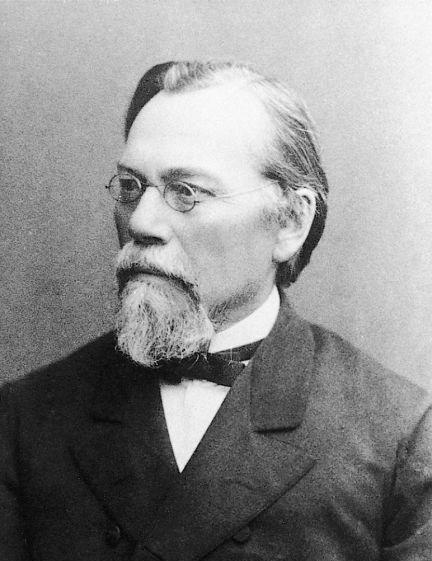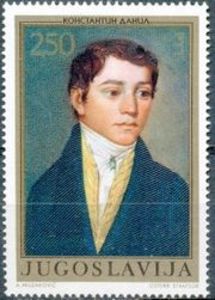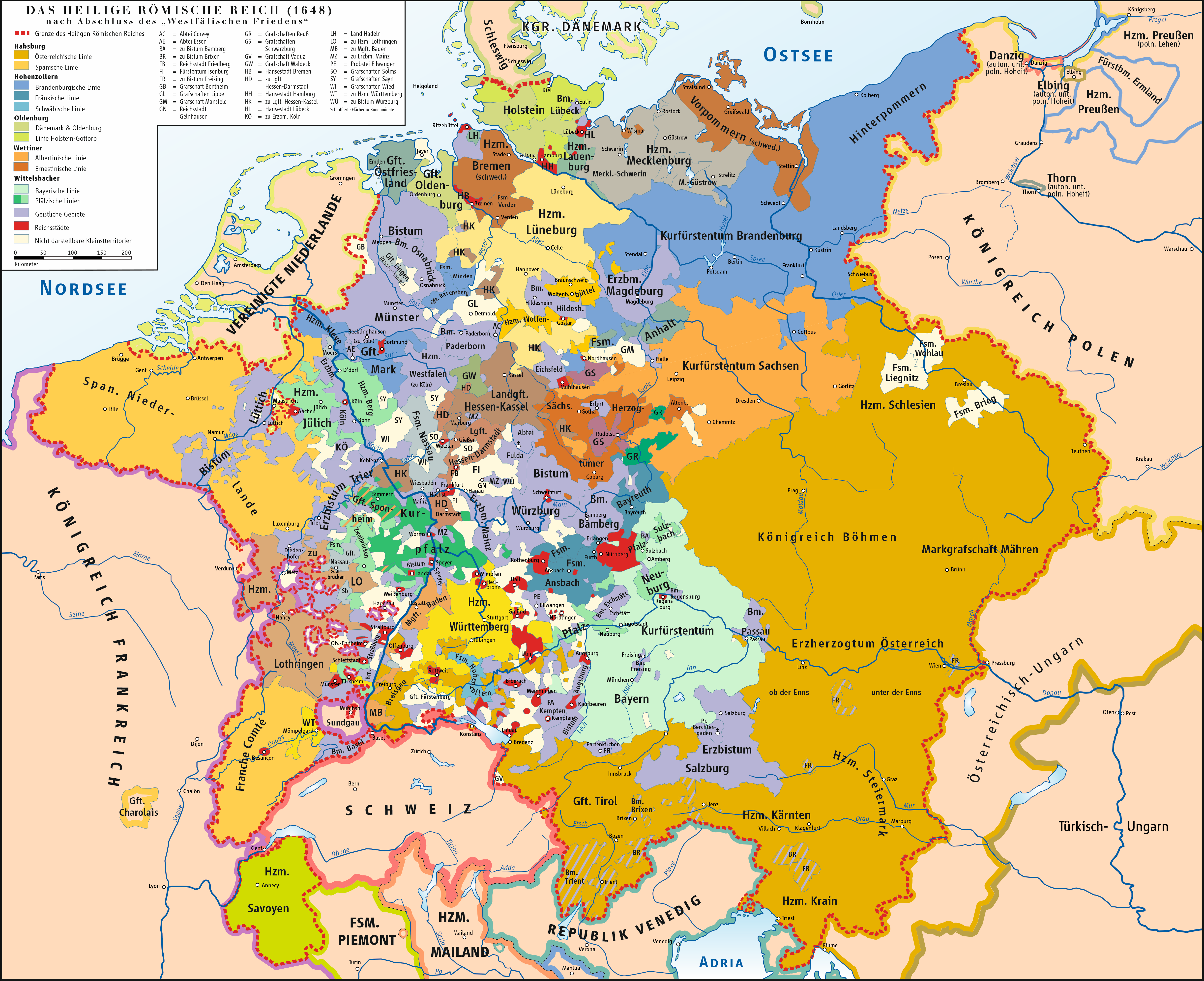|
Novak Radonić
Novak Radonić ( sr-Cyrl, Новак Радонић; Mol, 31 March 1826 – Sremska Kamenica, 11 July 1890) was a Serbian painter from the Austrian Empire and later Austria-Hungary. Life and work He was the pupil of Petar Pilić and Nikola Aleksić before he went to study art in Vienna in 1851. Upon graduation, he went to live and work in Bačka. He completed iconostases in churches in his native Mol, as well as in nearby Ada and Srbobran. He was best known as a painter of historical compositions, for example the Death of Emperor Uroš and the Death of Prince Marko. In addition to religious themes and historical compositions, he also painted portraits in which he reached the highest peaks. His portrait of a boy Dušan Popović is one of the most beautiful and celebrated Serbian portraits from the nineteenth century. As a visual chronicler of Serbian civil society, with an exceptional feeling for the characteristics of the character, he left a whole gallery of portraits of ... [...More Info...] [...Related Items...] OR: [Wikipedia] [Google] [Baidu] |
Mol (Ada)
Mol ( sr-cyr, Мол, ) is a town located in the Ada municipality, in the North Banat District of Serbia. It is situated in the Autonomous Province of Vojvodina. The town has a Hungarian ethnic majority (62.14%) and it has a population of 6,009 (2011 census). Ethnic groups (2002 census) *Hungarians = 4,217 (62.14%) *Serbs = 2,189 (32.26%) *Roma = 153 (2.26%) *others Historical population *1948: 8,275 *1953: 8,121 *1961: 8,097 *1971: 8,128 *1981: 7,950 *1991: 7,522 *2002: 6,786 *2011: 6,009 Sites St. Sava Orthodox Church in Mol, built in early 19th century, is protected as a cultural monument of great importance. It contains works of Arsenije Teodorović, Nikola Aleksić and Mol's native Novak Radonić. Notable citizens *Norbert Könyves (1989– ), born in Senta, professional footballer who plays for Hungarian club Zalaegerszegi TE *László Moholy-Nagy (1895–1946), Hungarian architect, painter and photographer, notable professor of the Bauhaus school *Jovan Radonić ... [...More Info...] [...Related Items...] OR: [Wikipedia] [Google] [Baidu] |
Jakov Ignjatović
Jakov Ignjatović ( sr-cyr, Јаков Игњатовић; 8 December 1822 – 5 July 1889) was a novelist and prose writer, who primarily wrote in Serbian but also in Hungarian. He was also an active member of Matica Srpska. Biography Jakov Ignjatović was born in Szentendre on 8 December 1822. He finished elementary school in Szentendre and studied at the Gymnasium in Vác, Esztergom and Pest. He enrolled in Law School at Pest, but left the university and joined the hussars. Later, he graduated law in Kecskemét, where he started his law practice in 1847 for a short time, but during the Hungarian revolution of 1848 in a Romantic fervor, he joined Hungarian forces in fighting against the Austrians, in contradiction to what most Serbs and Croats in Austria of the time did, siding with the empire. He was briefly arrested when the revolution was suppressed. After the Hungarian defeat, Ignjatović fled to Belgrade. There he worked as a journalist till 1850, and later, he traveled ... [...More Info...] [...Related Items...] OR: [Wikipedia] [Google] [Baidu] |
Painters From Austria-Hungary
Painting is a Visual arts, visual art, which is characterized by the practice of applying paint, pigment, color or other medium to a solid surface (called "matrix" or "Support (art), support"). The medium is commonly applied to the base with a brush. Other implements, such as palette knives, sponges, airbrushes, the artist's fingers, or even a dripping technique that uses gravity may be used. One who produces paintings is called a painter. In art, the term "painting" describes both the act and the result of the action (the final work is called "a painting"). The support for paintings includes such surfaces as walls, paper, canvas, wood, glass, lacquer, pottery, leaf, copper and concrete, and the painting may incorporate other materials, in single or multiple form, including sand, clay, paper, cardboard, newspaper, plaster, gold leaf, and even entire objects. Painting is an important form of visual arts, visual art, bringing in elements such as drawing, Composition (visual art ... [...More Info...] [...Related Items...] OR: [Wikipedia] [Google] [Baidu] |
Artists From The Austrian Empire
An artist is a person engaged in an activity related to creating art, practicing the arts, or demonstrating the work of art. The most common usage (in both everyday speech and academic discourse) refers to a practitioner in the visual arts only. However, the term is also often used in the entertainment business to refer to actors, musicians, singers, dancers and other performers, in which they are known as ''Artiste'' instead. ''Artiste'' (French) is a variant used in English in this context, but this use has become rare. The use of the term "artist" to describe writers is valid, but less common, and mostly restricted to contexts such as critics' reviews; "author" is generally used instead. Dictionary definitions The ''Oxford English Dictionary'' defines the older, broader meanings of the word "artist": * A learned person or Master of Arts * One who pursues a practical science, traditionally medicine, astrology, alchemy, chemistry * A follower of a pursuit in which skill co ... [...More Info...] [...Related Items...] OR: [Wikipedia] [Google] [Baidu] |
1890 Deaths
Events January * January 1 – The Kingdom of Italy establishes Eritrea as its colony in the Horn of Africa. * January 2 – Alice Sanger becomes the first female staffer in the White House. * January 11 – 1890 British Ultimatum: The United Kingdom demands Portugal withdraw its forces from the land between the Portuguese colonies of Mozambique and Angola (most of present-day Zimbabwe and Zambia). * January 15 – Ballet '' The Sleeping Beauty'', with music by Tchaikovsky, is premiered at the Imperial Mariinsky Theatre in St. Petersburg, Russia. * January 25 ** The United Mine Workers of America is founded. ** American journalist Nellie Bly completes her round-the-world journey in 72 days. February * February 5 – The worldwide insurance and financial service brand Allianz is founded in Berlin, Germany. * February 18 – The National American Woman Suffrage Association (NAWSA) is founded by Elizabeth Cady Stanton and Susan B. Anthony. * February 24 – Chicago is se ... [...More Info...] [...Related Items...] OR: [Wikipedia] [Google] [Baidu] |
1826 Births
Events January–March * January 15 – The French newspaper ''Le Figaro'' begins publication in Paris, initially as a satirical weekly. * January 17 – The Ballantyne printing business in Edinburgh (Scotland) crashes, ruining novelist Sir Walter Scott as a principal investor. He undertakes to repay his creditors from his writings. His publisher, Archibald Constable, also fails. * January 18 – In India, the Siege of Bharatpur ends in British victory as Lord Combermere and Michael Childers defeat the princely state of Bharatpur, now part of the Indian state of Rajasthan. * January 30 – The Menai Suspension Bridge, built by engineer Thomas Telford as the first major suspension bridge in world history, is opened between the island of Anglesey and the mainland of Wales. * February 6 – James Fenimore Cooper's novel ''The Last of the Mohicans'' is first printed, by a publisher in Philadelphia. * February 8 – Unitarian Bernardino Rivadavia becomes the first Pr ... [...More Info...] [...Related Items...] OR: [Wikipedia] [Google] [Baidu] |
Stevan Todorović
Stevan Todorović ( sr-cyr, Стеван Тодоровић; Novi Sad, 1832–Belgrade, 1925) was a Serbian painter and the founder of modern fencing and Sokol movement in Yugoslavia. Biography Born in Novi Sad, Todorović moved in 1839 to Szeged, where he completed elementary school and five grades of high school. In 1850 he relocated to Vienna to study art. After several years in Vienna, he settled in Belgrade, where he was engaged with a gymnastic and fencing club, as well as theatre. He also ran a successful drawing school. In 1864, he married painter Poleksija Todorović (née Ban), who was his wife for over sixty years. They worked together on various projects in churches across Serbia, including iconostases in Church of the Nativity of the Virgin in Bogatić and in the Holy Trinity Church in Negotin. He was a correspondent and war painter for a number of domestic and foreign newspapers during the Serbian-Turkish Wars (1876–1878), and became known as the founder of w ... [...More Info...] [...Related Items...] OR: [Wikipedia] [Google] [Baidu] |
Katarina Ivanović
Katarina Ivanović (15 April 1811 – 22 September 1882) was a Serbian painter from the Austrian Empire. She is regarded as the first Serbian female painter in modern art history. Biography Ivanović was born in Veszprém in the Austrian Empire to a middle-class family, and grew up in Székesfehérvár. She initially studied painting in Budapest and enrolled in the Academy of Fine Arts in Vienna in 1835. Her friends and supporters included Teodor Pavlović, who wrote about her in ''Serbski Narodni List'', and Sima Milutinović, who devoted a poem to her in 1837. Ivanović traveled to Italy, France and Holland, and studied at the Academy of Fine Arts in Munich between 1843 and 1845. She worked in Belgrade from 1846 to 1847, where she painted portraits of notable people of the era, including Princess Persida Nenadović and Voivode Stevan Knićanin. In later years, she spent a lot of time traveling and living at different places, including Paris and Zagreb. Ivanović returne ... [...More Info...] [...Related Items...] OR: [Wikipedia] [Google] [Baidu] |
Konstantin Danil
Konstantin Danil ( sr-Cyrl, Константин Данил, ; 1798–1873) was a Serbian painter of the 19th century. He is most famous for his portraits and religious painting. Danil is considered to be the most important Serbian painter of Biedermeier. Biography According to Felix Kanitz he was born to a Serbian family as Danilo Petrović. Other sources state that his origin and birthplace is unclear. He was born either in Lugoj or Ečka. At the age of thirteen he left Lugoj for Timișoara, where he executed a drawing which procured his admission to the school of Arsenije Teodorović. Teodorović was a principal of a drawing school, and through it he influenced a whole new generation of younger artists, including a few that rivaled him. One of them was Konstantin Danil. Here Konstantin Danil studied for several years, and produced, among other works, a figure of Saint Sava which attracted much attention. The Serbian master gave every encouragement to the young Konstantin Dan ... [...More Info...] [...Related Items...] OR: [Wikipedia] [Google] [Baidu] |
List Of Painters From Serbia
This is a list of notable Serbian painters. A * Nikola Aleksić (1808–1873) * Dimitrije Avramović (1815–1855) * Ljubomir Aleksandrović (1828–1890) * Stevan Aleksić (1876–1923) * Dragomir Arambašić (1881–1945) * Stojan Aralica (1883–1980) * Đorđe Andrejević Kun (1904–1964) * Mika Antić (1932–1986) * Dragoslav Pavle Aksentijević (born 1942) * Marina Abramović (born 1946) * Nataša Atanasković (born 1972) * Emanuil Antonovich (1785–1829) B * Nikola Božidarević (1460–1517) * Dimitrije Bačević (1735–1770) * Georgije Bakalović (1786–1843) * Anastas Bocarić (1864–1944) * Špiro Bocarić (1876–1941) * Jovan Bijelić (c.1884–1964) * Ilija Bašičević (1895–1972) * Oto Bihalji-Merin (1904–1993) * Dimitrije Bratoglic (1765–1831) * Janko Brašić (1906–1994) * Miloš Bajić (1915–1995) * Radivoj Berbakov (1925–2003) * Kossa Bokchan (1925–2009) * Ivana Bašić (born 1986) * Bogdan Bulajić (born 1940) C ... [...More Info...] [...Related Items...] OR: [Wikipedia] [Google] [Baidu] |
Stefan Uroš V
Saint Stefan Uroš V ( sr-Cyrl, Стефан Урош V, ; 13362/4 December 1371), known in historiography and folk tradition as Uroš the Weak (), was the Emperor of the Serbs, second Emperor (Tsar#Serbia, Tsar) of the Serbian Empire (1355–1371), and before that he was Serbian King and co-ruler (since 1346) with his father, Emperor Stefan Dušan. Early life Stefan Uroš V was the only son of Stefan Uroš IV Dušan by Helena of Bulgaria, Empress of Serbia, Helena of Bulgaria, the sister of Ivan Alexander of Bulgaria. He had been crowned as king (second highest title) in the capacity of heir and co-ruler after Dušan was crowned emperor in 1346. Although by the time of his succession as sole ruler and emperor in 1355 Stefan Uroš V was no longer a minor, he remained heavily dependent on his mother and various members of the court. Reign file:Loza Nemanjica Decani c 2.jpg, left, 200px, Depiction in the Serbian Orthodox Monastery of Visoki Dečani, Serbia The account of the conte ... [...More Info...] [...Related Items...] OR: [Wikipedia] [Google] [Baidu] |
Habsburg Monarchy
The Habsburg monarchy, also known as Habsburg Empire, or Habsburg Realm (), was the collection of empires, kingdoms, duchies, counties and other polities (composite monarchy) that were ruled by the House of Habsburg. From the 18th century it is also referred to as the Austrian monarchy, the Austrian Empire () or the Danubian monarchy. The history of the Habsburg monarchy can be traced back to the election of Rudolf I of Germany, Rudolf I as King of the Romans, King of Germany in 1273 and his acquisition of the Duchy of Austria for the Habsburgs in 1282. In 1482, Maximilian I, Holy Roman Emperor, Maximilian I acquired the Habsburg Netherlands, Netherlands through marriage. Both realms passed to his grandson and successor, Charles V, Holy Roman Emperor, Charles V, who also inherited the Monarchy of Spain, Spanish throne and Spanish Empire, its colonial possessions, and thus came to rule the Habsburg empire at its greatest territorial extent. The abdication of Charles V in 1556 led ... [...More Info...] [...Related Items...] OR: [Wikipedia] [Google] [Baidu] |








